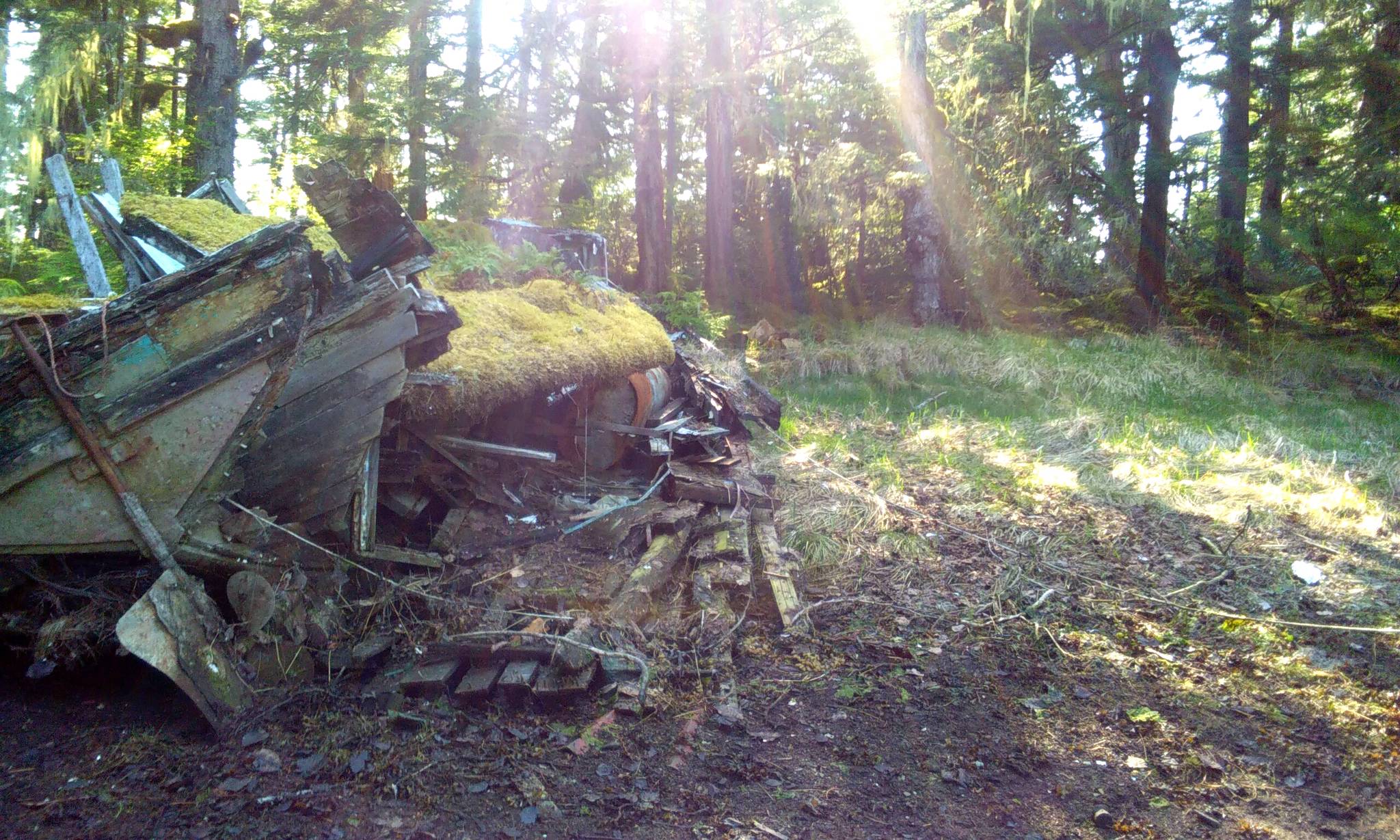A few days ago if you had seen a load of flying laundry neatly settle itself into a box and a woman holding it levitate up from an ungainly sprawl as a broken board snapped sharply together under her feet you’d know something had gone wrong with the laws of physics.
Namely, the second Law of Thermodynamics which basically states that the energy levels in an isolated system will tend toward equilibrium. Within that Law, entropy is a measure of the disorder of a system. Natural processes will always proceed in the direction that increases the disorder of a system. This is called “the arrow of time.”
Or to put it in laymen terms: Entropy is the amount of energy that is no longer available to do work — something falling into chaos and/or ruin is an illustration of an increase in entropy.
Or, to put it in my own words, a board in my front deck rotted and I fell through it, acquiring an interesting assortment of bruises, but thankfully no broken bones, in the process.
Everything in Southeast Alaska is vulnerable to the forces of decay by virtue of its rainy, temperate climate. It’s a constant battle of man against entropy in the wilderness, and sometimes it seems that goes double for floathouse dwellers.
Sometimes the wilderness, or Duma of Decay (Duma is Russian for “council” or “parliament”) as I like to call it, gives you telltale signs that the arrow of time is working to bring about your literal downfall. We were taught when we were very young to never step on boards that had mushrooms or moss growing on them, or had white spotted areas, or were soft to the touch.
But sometimes there’s no warning at all in the silent, covert work of entropy. Like when I fell through my deck. Or when I fell through a rung on the roof ladder when I was trying to clean the chimney.
Any fisherman who’s had a wooden boat knows what I’m talking about. My dad spent a good portion of his time as a boat owner replacing vital areas of the hull, deck, and cabin. In fact, when he first got his boat he had to re-build most of it because so much of it had given way to the forces of entropy. There’s a shipwreck near us that is slowly deteriorating into a moss-covered heap due to its rotten hull springing a leak.
Also nearby is a century-old trapper’s cabin built of square-cut logs. Over the years we’ve watched it settle and subside and lose its history, its existence, to the Duma of Decay.
In fictional books about Southeast Alaska, rot is depicted as a major villain, a foe to overcome and triumph against—or fall victim to. (See my review of Kathrene Pinkerton’s novel “Hidden Harbor” at juneauempire.com).
We are always working to out-maneuver this relentless foe. We try to use yellow cedar with its natural rot resistance wherever possible. We oil the brow logs of our floathouses, or use creosote pilings, and protect any exposed wood. We use pressure-treated decking as much as possible, though it weighs more, a definite drawback when your house floats.
The forest is always trying to grab a toe-hold wherever it can. Moss, grass, and seedlings put down roots in our floathouses and farm the upper surfaces of roofs and logs. Keeping up with entropy is, indeed, a full-time job.
It’s not all negative. Yes, in the broader world, in popular usage, entropy frequently symbolizes universal mortality and dissolution. The focus is on the eventual death and futility of everything, and humans, as “self-aware components of a dying system” as one critic put it, ask themselves “does anything matter and what if it did?”
But in the wilderness, you see it differently.
Since I was a child I’ve been fascinated by the passage of time and the effect it has on everything around us. I grew up in the ruins of a burned salmon cannery that operated in the first half of the 20th century. I spent a lot of my time wandering around the ruins and wondering about the people who had gone before, about what the cannery had looked like in its heyday, and why everything deteriorated as it did.
When we played in the woods in our forts, my sister and I would harvest the spilled, rotten red heart of a cedar tree and make “chili” and “hamburgers” out of it. The forest itself was rich with new, young life basking in stray beams of sunlight and growing out of the mossy ruins of the old, and it seemed to reflect our experience of our youthful selves running, shouting, and playing in the ruins of an old, bygone world.
As Ecclesiastes 3:15 says: “Whatever happens has already happened, and what is to come has already been.” Nothing is really completely lost, everything is renewed, reintroduced, rediscovered, and re-experienced in intricate cycles.
I’ve lived in the wilderness for most of my life and the mysterious ways of entropy have never failed to make me marvel and wonder.
• Tara Neilson lives in a floathouse between Wrangell and Ketchikan and blogs at www.alaskaforreal.com.

